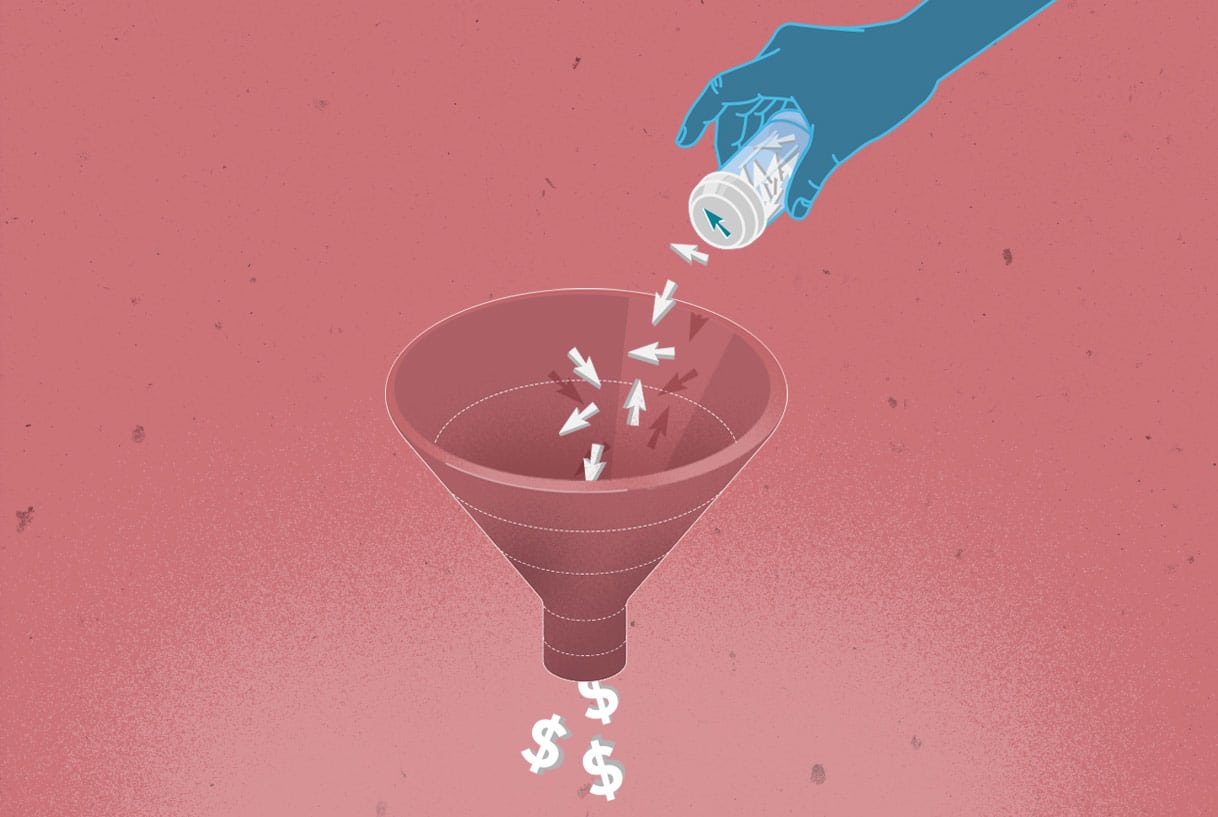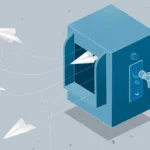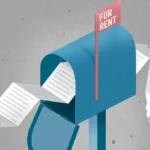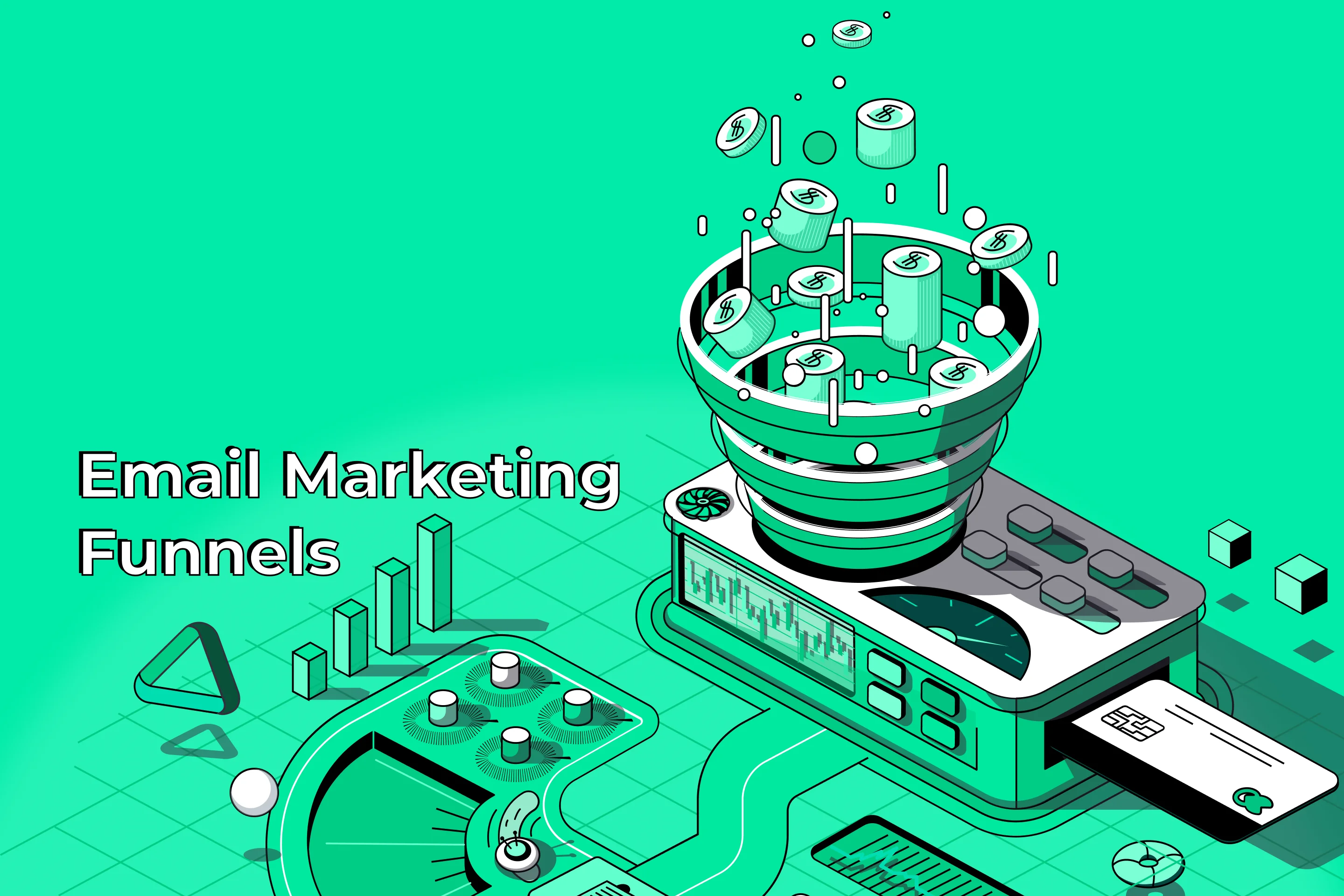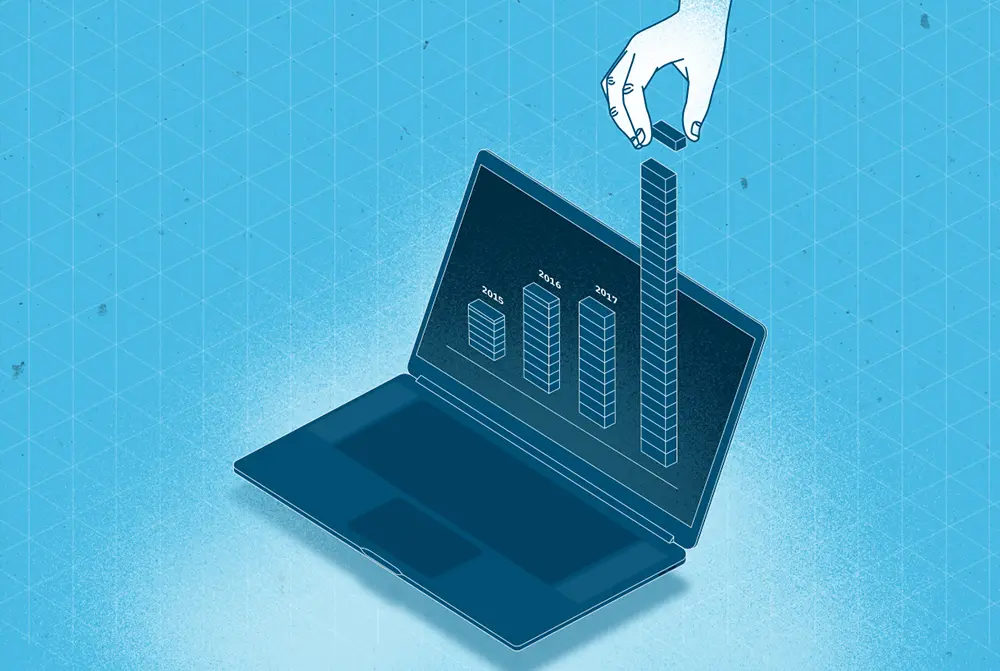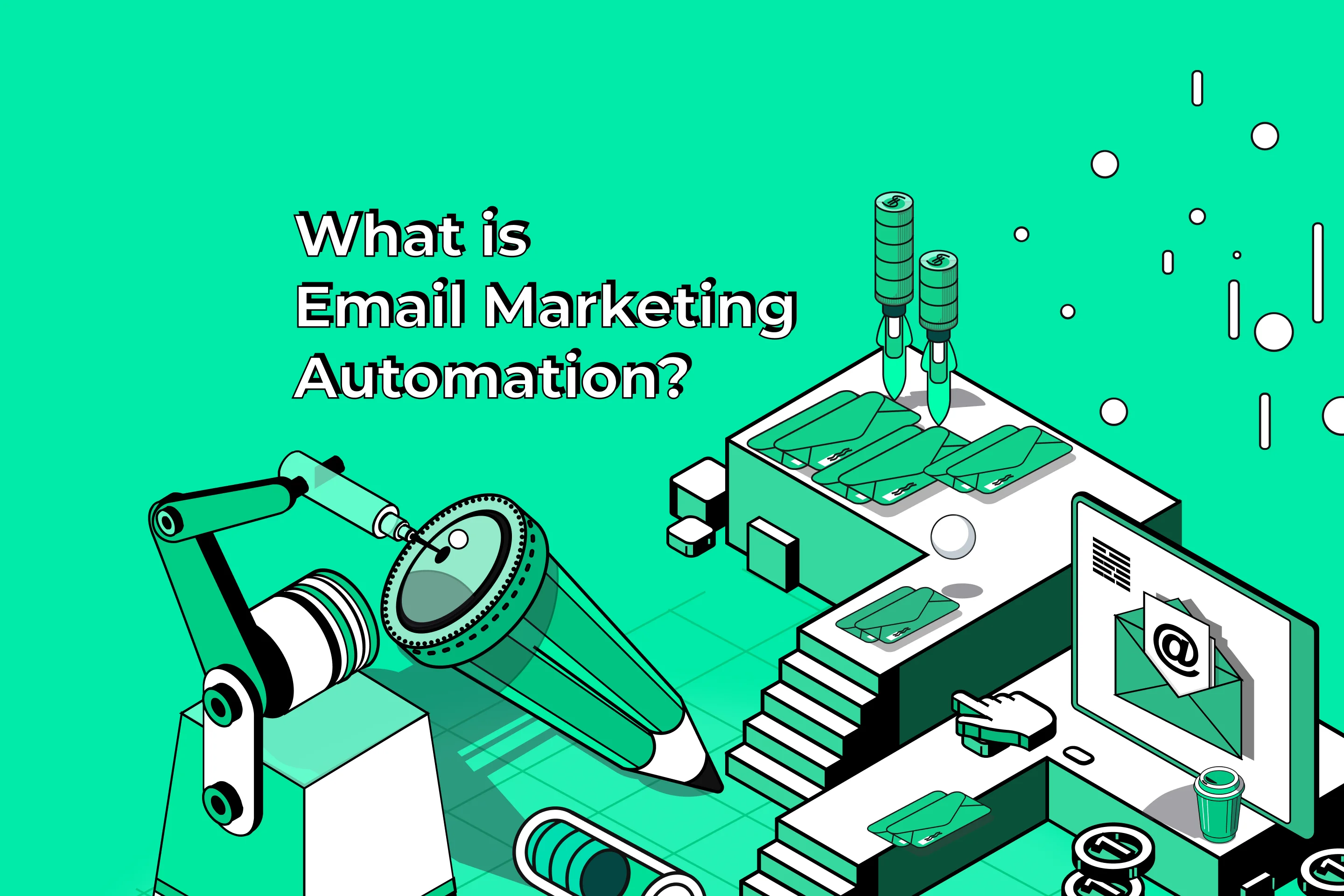The 5 Marketing Funnel Stages You Need to Know
The marketing funnel is a conceptualization of the steps describing the sales process from start to finish.
The term funnel is used to represent the path your audience takes to a buy, with some leaving this trail, deciding not to buy, and others continuing all the way to the checkout.
The funnel reflects the narrowing of your potential leads down to the most promising ones over this journey.
Straight off the bat, here are the five marketing funnel stages:
- Awareness
- Consideration
- Conversion
- Loyalty
- Advocacy
Let’s dive straight in and explore the marketing funnel further.
What is a marketing funnel?
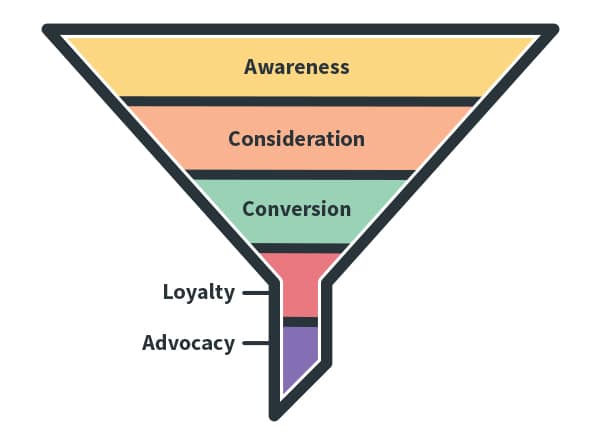
(Source: code95.com)
At the top of a marketing funnel, you have many potential leads.
As your customers move from gaining awareness of your brand to considering a purchase, to making their final decision to buy or not, the number of potential leads decreases.
The likelihood of these leads continuing all the way to the checkout is higher, as they have already committed to the initial stages of their decision.
By the time your audience gets to the bottom of the funnel, you will be left with the small portion of potential leads that actually converted to a purchase and have become fans of your brand.
Depending on the size of your audience, this could be any number of people.
The goal of conversion optimization, and visualizing your customer journey as a funnel, is to strengthen the areas where your potential leads are dropping off, so you have more of them getting all the way to the bottom and boosting your revenue.
In this guide, we cover the 5 digital marketing funnel stages you need to know and why.
Use the marketing funnel as a concept to better understand the customer’s journey through your site.
With powerful automation features, DirectIQ offers ideal solutions to effectively utilize your marketing funnel, and engage with your audience. Click here to sign up for a free account and give it a try!
What is an example of a marketing funnel?
An example of a marketing funnel would be if you were to promote a new product launch.
Your potential customers would first become aware of the product through marketing channels such as social media, your website, or advertising.
Then, they would enter the consideration stage, evaluating whether this product is right for them and researching alternatives.
After that, they would reach the conversion stage, deciding to buy the product and going through with the purchase.
Finally, they would enter the loyalty stage, becoming a repeat customer and advocate for your brand.
You can think of a marketing funnel as a tool that can be used to map out and track the journey your potential customers take from awareness to purchase.
What are the benefits of a marketing funnel?
There are several benefits to using a marketing funnel as part of your sales and marketing strategy.
Some of these benefits include:
- Helping you to better understand your customers and their needs
- Allowing you to track the progress of your potential customers through their journey
- Enabling you to focus your marketing efforts on the most promising leads
5 Stages Of The Marketing Funnel
1. Awareness

(Source: stock.adobe.com)
All variations of the marketing funnel begin with awareness.
It is at this stage that a lead becomes aware of your brand or your products.
It is essential to develop a digital presence, fostering familiarity with your name, so the people who are most likely to buy your products are aware of your authority in the field.
As an online business, your exposure strategy should consist of 4 primary tactics, including:
- Content marketing
- Social Media
- Organic Searches
- Paid advertisements
The miracle of content marketing is that you can build familiarity with your brand before people even know what you sell.
The primary purpose of your content offering is to give your audience information, advice, and guidance they may be looking for as the need or desire making them perfect candidates for your products arises.
By harnessing the power of social media, getting people to share your content, you can take advantage of the legitimacy of “word-of-mouth” that traditional advertising often lacks.
Share your content with relevant communities on social media, chat with like-minded individuals and provide solutions to issues within and surrounding your industry to reflect your expertise.
Building a presence on social media is all about giving your audience value.
What could you provide more information on that would add value to your audience’s perception of your brand?
Organic searches can also help get you content exposure.
If users search for information and discover your company in one of the top results, they are likely to see you as a leader in your field.
This is not only for the quality of your content but because ranking high in searches implies the information you provide is considered to be relevant and valuable.
Paid ads, like banners and pay-per-click (PPC), can also be used to generate exposure.
Think of the big-brand Christmas ad.
Its primary job is not to advertise products but to make the most of the holiday spirit, playing on heartwarming stories and nostalgia to put their brand in people’s minds under an emotionally-positive light.
By leveraging the demand for information, advice, and guidance in your area of expertise, you can begin to establish your business at the forefront of its industry.
Drop subtle hints, benefits, and descriptions of the type of products you sell in each piece of content you create and distribute.
Help customers to add to the basic knowledge that you exist, by learning what type of business you are.
2. Consideration
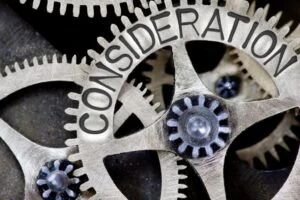
(Source: stock.adobe.com)
As a potential lead moves out of the phase of awareness, they enter a period of consideration. It is at this stage that you begin to strengthen your relationship.
The customer has developed a more specific desire to explore your company.
They want to know about you, your products, and services and how they can benefit them.
In turn, you will be able to glean more information from customers about themselves, enabling you to provide targeted solutions and content that explain exactly what your company and your products could do for them.
It is estimated that consumers are 75% of the way to making their decision to buy from your brand before they ever begin to check out.
Thus, it is critical to address all issues and FAQs on your website to make it easy for customers to move from consideration to conversion.
Product “how to” guides, showcases, and solutions to common “pain points” can be used to provide your leads with the information they need to know that will make or break their purchase decision.
Videos are a great way to show what your products can do.
Infographics, blog posts, and e-book guides can also do an excellent job of demonstrating your products in action.
This is what customers need to see.
They want to know how the type of products you sell could be beneficial to them, and in what ways.
Making the most of the online customer’s need to see your products and their functionality, you can present them in the best way possible.
Make it easy for them to imagine how a purchase with your company could add value to their lives.
3. Conversion
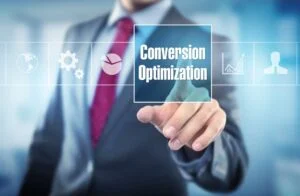
(Source: stock.adobe.com)
When you have convinced your potential customer that your product is something worth having, it is time to reel them into making a decision.
It is at the point of conversion that you need to make it clear why buying from you is the best option, why buying now is the best option, and how easy it is to make a purchase through your online store.
Convince your leads that buying from you is the right choice.
You may have convinced your visitors that purchasing a particular type of product will give them benefits. Now you need to tie them down to your brand.
Whether your industry is highly competitive or not, there is always another option to buy something from somebody else.
What can your products do that others in the same price bracket cannot?
What support does your company offer its customers?
Do you provide free delivery where your competitors don’t?
Is your price lower than your competitors?
These could all be factors influencing your customer’s choice to stick with you or go for a similar product from another brand.
What is the goal of the conversion stage?
The goal of the conversion stage is to assure your potential customers that they are making the right decision by choosing to buy from you.
Here are three key tips for you to consider:
- Demonstrate how easy it is to make a purchase on your website or online store
- Give visitors the confidence that they will be happy with their purchase
- Make it clear that your company is the best option for their needs
Remove obstacles from your buyer’s path to a purchase.
Anything you can do to remove steps from your buyer’s journey to making a buy can help.
If you require customers to create an account when they make a purchase with you, are you sending them away because they “already have an account with Amazon” so it’s quicker?
Removing this requirement, or offering one-click signup to users through their social media accounts can both increase the percentage of customers that make a purchase with your site.
Make the Sale.
No one likes filling in forms.
The more information you have about your customers, the more precisely you can retarget them for later sales, yes.
But this info can always be collected at a later stage.
The most important thing you can do once your buyer clicks to check out is to make your payment gateway form as quick, comfortable, and painless as possible.
This means not asking for too much information, providing a multiplicity of options for common (Visa/Mastercard) as well as alternative payment preferences (such as Paypal and Bitcoin).
At the conversion stage, your buyer already has a degree of purchase intent.
They have established that this type of product is something they need or want.
Make them aware of why your business is the only choice to buy from, and smoothen their path to their buy.
4. Loyalty

(Source: stock.adobe.com)
When a lead becomes a customer, you need a plan for keeping in contact and building their loyalty.
Without a way to stay in touch with your online customers, they may leave your store and forget about you before the next time they need your products.
You want to add customers to your brand community so you can keep them coming back for more.
Mailing List: It is essential to ask buyers to sign up to your mailing list when they do make a purchase.
And it is crucial to make sure you offer them a good incentive for doing so.
Give a free gift or a discount to everyone who signs up during checkout.
Ensure you tell them the value they will gain from doing so.
If you are going to send them regular content covering various topics, make this clear, and explain how they could benefit from the type of content you will send them.
At DirectIQ we provide a variety of ready-made templates for sending weekly newsletters and marketing emails to your customers to ensure they are consistently engaged by your brand.
Social Media: Some people don’t check their email often and rarely engage with commercial emails that they receive.
But many of those people also have social media accounts.
Offer follow buttons for all your social media accounts on your order confirmation page.
Also, provide them in all your emails.
Tell customers what following you will get them – whether it is exclusive weekly content about how best to use your products or monthly competitions, exclusive to social media.
Recommendations: Display recommendations for similar products on your payment confirmation page post-purchase to instantly “upsell” your customers on another add-on, plug-in, or accompanying product.
Customers who have just spent money in your store are more likely to buy again, so take advantage of this.
E-Commerce giants such as Amazon suggest recommendations in an incredibly sophisticated manner, and indication of how profitable they consider them to be.
5. Advocacy
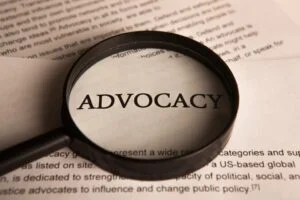
You only reach the advocacy stage of your marketing funnel once your customers become fans.
As opposed to merely being a business from which they can buy products, you want to be a brand that they talk about and share with their friends.
How?
By offering them the same kind of high-quality content you provided them with initially but tailored to their customer-type.
Establishing points of contact with your customer are critical to success.
You probably know more than any other business in your area about your specific pool of customers.
You have data on their locations, product interests, names, and the possible reasons they may be buying your products.
Through email and social media, you can begin to target them more specifically with content that is relevant to only their customer-type.
Email is your best asset here.
Targeted email campaigns have been said to generate up to 760% increases in revenue.
Email is well-known for getting you the best returns on your investment.
By segmenting your mailing list into different customer types, using the information your contacts have provided with, you can target them with specifically relevant email content that will keep them engaging with your business even when they aren’t ready to make a buy.
When they are, because they love the support and advice your brand give them, they will come straight to you.
With DirectIQ, you can tailor your emails to each segment of your audience according to any metric you have gathered on them.
Give customers content that speaks to who they are.
Marketing Funnel Stages (Essential Tips)
Add Value
All relationships rely on each party gaining some value.
If the payoff is not worth the execution (e.g. clicking around your site or filling in a form), you will be losing customers.
The concept of the marketing funnel is productive because it tells us where we need to add value.
By increasing the value you give to customers at each stage, relevant to a particular phase of the buying process, you can gently nudge your visitors all the way to the checkout and beyond to become advocates of your brand.
Monitor Your Funnel
Optimizing your marketing funnel requires research and an understanding of what makes your customer tick.
It means evaluating your success in getting more people into the funnel, nudging more down through it, and doing your best to turn them into advocates for your business.
What does your audience want?
Your data will tell you.
Keeping an eye on specific metrics that indicate customer engagement and interactions with your marketing streams and campaigns can be of enormous benefit.
Analyzing this data will reveal the areas of your marketing funnel where you are losing customers so you can remove or adapt whatever obstacles are getting in the way of their purchase path.
For each change, you make to the buyer’s trail through your site, monitor subsequent site data to establish its success.
This will allow you to compare the viability of different versions of your site so that each change you stick with is the one that generates the highest returns.
Use the knowledge you glean from this article to evaluate the buyer’s path through your own business’ buying process and optimize it for higher conversions and more promising leads.
You can check out our newest article about Email Marketing Funnels to get more information and insights on this matter.







